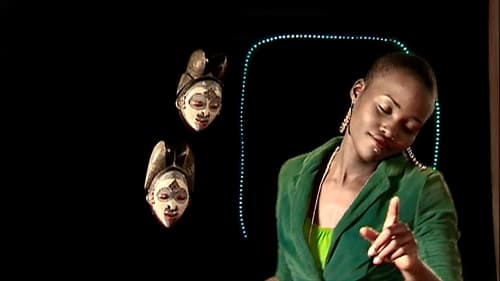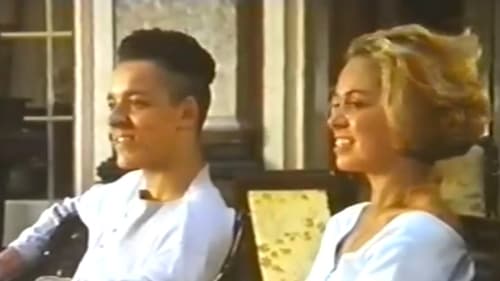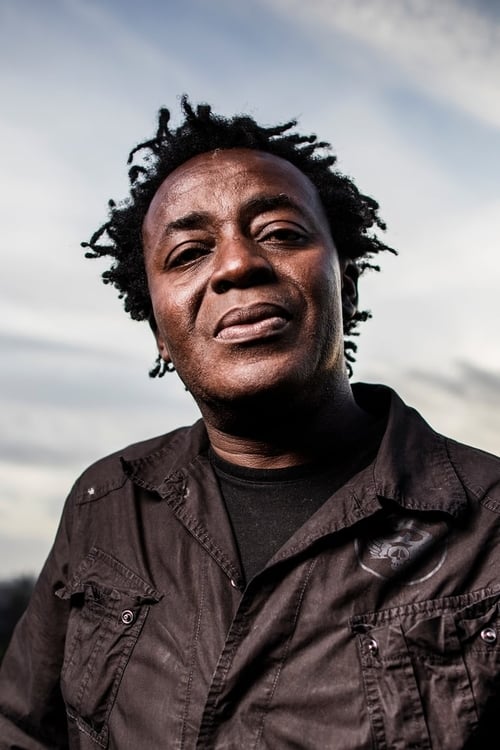John Akomfrah
Рождение : 1957-05-04, Accra, Ghana
История
John Akomfrah, CBE (born 4 May 1957) is a British artist, writer, film director, screenwriter, theorist and curator of Ghanaian descent, whose "commitment to a radicalism both of politics and of cinematic form finds expression in all his films".

Director
Three-screen black and white video installation exploring how individuals and communities have been coping with the pandemic, the radical mobilization seen on the streets and the disruption of cycles of racism, and the increasingly urgent crisis of climate change.

Director
Triptych (2020) is a homage to the the radical, political album, ‘We Insist!’ (1960) by the jazz musician Max Roach – the ideas of which prefigured the themes that became the Civil Rights and anti-apartheid movements. The catalyst for this film was the broadcasted portraits of figures such as Breonna Taylor and George Floyd, and the evident incongruity between the beguiling ordinariness of the images that represented them with the violent end we know they endured. Through a rare focus on portraiture, Akomfrah seeks to express the diversity of Black characters, characteristics and characterisations that should form the bedrock of any de-colonial or anti-racist future.

Director
Commissioned for the inaugural Ghana pavilion at the Venice Biennale, Four Nocturnes (2019) forms the third part of a trilogy of films including the renowned Vertigo Sea (2015) and Purple (2017) that explore the complex intertwined relationship between humanity’s destruction of the natural world and our destruction of ourselves. Using Africa’s declining elephant populations as its narrative spine, Four Nocturnes questions mortality, loss, fragmented identity, mythology and memory through poetic visuals that survey the landscape of African cultural heritage.

Director
Commemorateing the millions of African soldiers, labourers and carriers participated in the First World War on the African continent and on the Western Front in Europe.

Director
A three-channel video installation, working with the themes of risk, hybridity and the unfathomable to explore the city of New Orleans through the remarkable life and times of Charles “Buddy” Bolden, the first person known to have explored the sonic tonalities of the music we now call jazz.

Director
Purple is a six-channel video installation addressing climate change, human communities and the wilderness. At a time when greenhouse gas emissions from human activities are at their highest levels in history, with people experiencing the significant impacts of climate change, including shifting weather patterns, rising sea levels, and more extreme weather events, Akomfrah’s Purple brings a multitude of ideas into conversation. These include animal extinctions, the memory of ice, the plastic ocean and global warming. Akomfrah has combined hundreds of hours of archival footage with newly shot film and a hypnotic sound score to produce the video installation.

Director
Tropikos transforms the landscape of the Tamar Valley in the South West of England into a sixteenth-century port of exploration on the African continent in order to reveal the deep-rooted and darker history of the river and the UK’s role in the development and proliferation of the slave trade.

Director
Auto Da Fé is a diptych that looks at migration through the lens of religious persecution. Presented as a poetic period drama, the film presents a series of eight historical migrations over the last 400 years, starting with the little known 1654 fleeing of Sephardic Jews from Catholic Brazil to Barbados. As the film develops, we are presented with tale after tale of populations being displaced along religious lines, right up to the present day migrations from Hombori, Mali and Mosul, Iraq. Religion, persecution and migration are, it seems, old and continuing bedfellows. The work was filmed on location in Barbados, but the landscape is deliberately anonymous, reflecting the universal nature of these stories.

Director
The Airport, a three-screen film installation conceived as a meditation on Greek history and its recent financial crisis, set around the landscapes of Southern Greece and an abandoned airfield near Athens, recalls the work of two filmmaking greats: Stanley Kubrick and Theo Angelopolous.

Director
Vertigo Sea is a three-screen film installation that explores what Ralph Waldo Emerson calls 'the sublime seas'. Fusing archival material, readings from classical sources and newly shot footage, Akomfrah's piece focuses on the disorder and cruelty of the whaling industry and juxtaposes it with scenes of many generations of migrants making epic crossings of the ocean for a better life.

Director
Transfigured Night draws its inspiration from two sources of the same name – Verklärte Nacht – the German poem by Richard Dehmel from 1896 and the musical composition by Arnold Schoenburg in 1899. Using the five-part structure of both the poem and the composition to reflect on the key moments and events which have shaped postcolonial histories, Transfigured Night mirrors the relationship between postcolonial subject and state with that of Dehmel’s lovers – speaking to the fleeting promises and ensuing disappointments of the post-colonial state.

Director
A fictional journey of post-apocalyptic survival.

Director
Through juxtaposing and layering archival footage with text, music and photographs, The Unfinished Conversation crosses the memory landscape of Stuart Hall, the Jamaican-born British cultural theorist, to reflect on the nature and complexities of memory and identity.

Director
The March is the feature documentary narrated by Denzel Washington about the renowned and historic 1963 March on Washington for Jobs and Freedom.

Director
В этом киноальманахе самые известные и самые молодые фестивальные режиссёры мира объединились, чтобы отпраздновать семидесятилетний рубеж одного из самых влиятельных фестивалей кино. Каждому режиссёру в рамках полутора минут была дана возможность изобразить свой неповторимый стиль на экране и по-своему признаться в любви кинематографу.

Director
A person’s culture is something that is often described as fixed or defined and rooted in a particular region, nation, or state. Stuart Hall, one of the most preeminent intellectuals on the Left in Britain, updates this definition as he eloquently theorizes that cultural identity is fluid—always morphing and stretching toward possibility but also constantly experiencing nostalgia for a past that can never be revisited

Director
Documentary commemorating the 50th anniversary of Martin Luther King's March on Washington, a pivotal moment in the Civil Rights Movement in the United States. The film tells the story of how the march for jobs and freedom began, speaking to the people who organised and participated in it. Using rarely seen archive footage the film reveals the background stories surrounding the build up to the march as well as the fierce opposition it faced from the JFK administration, J Edgar Hoover's FBI and widespread claims that it would incite racial violence, chaos and disturbance. The film follows the unfolding drama as the march reaches its ultimate triumphs, gaining acceptance from the state, successfully raising funds and in the end, organised and executed peacefully.

Director
Peripeteia (Greek: περιπέτεια; a reversal of circumstances, or turning point) is a moving visualization of a black man and woman that appear in a 16th century drawing by the German Renaissance master Albrecht Dürer. John Akomfrah uses the film to give them movement and to imagine their lives and actions.

Director
A homage to Russian film giant Andrei Tarkovsky, this work integrates excerpts of soundtracks from Tarkovsky’s films with a slideshow of landscapes shot by Akomfrah and an evocative sculptural installation. Working with long time collaborator, sound artist Trevor Mathison, Akomfrah creates an environment thick with longing and the evasive and yet inescapable presence of death. At the Graveside of Tarkovsky is a mixed media installation with sound and single channel HD colour video.

Director

Writer
Part documentary, part personal essay, this experimental film combines archive imagery with the striking wintry landscapes of Alaska to tell the story of immigrant experience coming into the UK from 1960 onwards.

Director
Part documentary, part personal essay, this experimental film combines archive imagery with the striking wintry landscapes of Alaska to tell the story of immigrant experience coming into the UK from 1960 onwards.

Writer
Part documentary, part personal essay, this experimental film combines archive imagery with the striking wintry landscapes of Alaska to tell the story of immigrant experience coming into the UK from the 1950s onwards.

Director
Part documentary, part personal essay, this experimental film combines archive imagery with the striking wintry landscapes of Alaska to tell the story of immigrant experience coming into the UK from the 1950s onwards.

Director
The Genome Chronicles is an epic investigation, unbounded by traditional notions of time, into the relationship between image and memory.
Fusing personal archival material of Donald Rodney with newly shot footage and material from Smoking Dogs Films personal archive of images and textures to create a poetic personal landscape.
Conceived as a “song cycle” in ten distinct but interrelated parts, The Genome Chronicles is organised by music from a variety of genres such as Tibetan chants, Indian Ghazals and post-punk noise pieces. The film uses this montage of sounds to explore overlapping concerns on the ethics of image making, on legacy and inheritance and on the unspoken perils of patrimony and kinship.

Himself
Interviewees discuss the memories, tastes and experiences that they associate with Africa for a personal vision of the continent.

Director
Stan Tracey: The Godfather of British Jazz is a portrait of one musician’s lifetime achievement. In a career spanning 60 years as pianist and composer, Tracey (1926 – 2013), recalls his life with unprecedented honesty. The film combines a mix of archive, landscape and interviews with musical giants such as saxophonist Courtney Pine, doyenne Cleo Laine and jazz eminence Humphrey Lyttleton. Stan Tracey’s obituary, published in the Guardian, 6 December 2013 can be viewed here. smokingdogfilms.com

Director
Drama about a man who lives in an analogue world but seeks to fulfil his desires in a digital world.

Director
Louis Armstrong is one of the most recognizable figures in jazz, with his incomparable trumpet playing and beaming smile. This video profiles Armstrong from his humble beginnings in New Orleans through his career as America's Ambassador of Good Will. Film clips, vintage photographs and interviews with family, friends, fellow musicians and Armstrong himself are woven together to tell the story of this legendary personality.

Director
John Akomfrah’s seminal Riot traces the riots in Liverpool during July 1981 in a climate of economic recession under Thatcher’s regime. Akomfrah captures this turning point in Britain’s struggle towards multicultural democracy through interviews revealing the ghettoisation and racial abuse in Toxteth that escalated with stop-and-search policing tactics following the “sus” laws.

Director
Speak Like a Child, the feature film debut of documentary director John Akomfrah, explores the intense friendship that evolves between three troubled teenagers growing up in an isolated children's home on the Northumbrian coast. The desolate beauty of the coastline is captured in stunning panoramas, while strong performances by the young cast help to create a lyrical and poignant drama.

Director
A vivid meditation on cloning, death, memory and media set on an remote Scottish island. A short film on the millennium’s end commissioned by BBC TV.

Director
Goldie, the godfather of drum and bass takes us on a roller coaster ride through his frenetic life. A journey that takes us from Wolver Hampton to Tokyo, Miami to Hong Kong; through his years in council care and his life as a musician and international pop star. Along the way we meet his family, his collaborators and his celebrated friends, David Bowie and Noel Gallagher.

Director
A revealing portrait of the private life and inner struggles of Martin Luther King Junior, champion of non-violent protest and martyr of the Civil Rights Movement. The film tells the story of Dr. King’s childhood and formative years, his early triumphs for Civil Rights and his personal sacrifices, his wilderness years and his rise to international prominence.

Director
An examination of the hitherto unexplored relationships between Pan-African culture, science fiction, intergalactic travel, and rapidly progressing computer technology.

Director
The subject matter of Memory Room 451 is the cultural and historical significance of 20th-century hairstyles – the Afro, the conk, dreadlocks – in Black communities on both sides of the Atlantic. Akomfrah has disguised this exploration as a science fiction story – in the manner of the groundbreaking writers profiled in The Last Angel of History – while providing a bravura display of the aesthetics of video art in the 1990s. The tale of visitors from the future who gather dreams from unwitting subjects in order to construct a history of the Black diaspora both defamiliarizes Akomfrah’s ongoing project and points to the danger that extracting history from memory can be a kind of expropriation.

Writer
The Black Audio Film Collective’s seventh film envisioned the death and life of the African American revolutionary as a seven part study in iconography as narrated by novelist Toni Cade Bambara and actor Giancarlo Espesito. The stylized tableaux vivants that memorialise Malcolm’s life referenced the early 20th century funeral photography of James Van der Zee’s The Harlem Book of the Dead and the elemental static cinematography of Sergei Paradjanov’s The Colour of Pomegranates.

Director
The Black Audio Film Collective’s seventh film envisioned the death and life of the African American revolutionary as a seven part study in iconography as narrated by novelist Toni Cade Bambara and actor Giancarlo Espesito. The stylized tableaux vivants that memorialise Malcolm’s life referenced the early 20th century funeral photography of James Van der Zee’s The Harlem Book of the Dead and the elemental static cinematography of Sergei Paradjanov’s The Colour of Pomegranates.

Self
A two part documentary that details the contribution of black and Asian people to television history from the birth of television in 1936 to 1992. Interviewees include: Pearl Connor, Thomas Baptiste, Lenny Henry, Norman Beaton, Horace Ové, Carmen Munroe, and Stuart Hall.

Himself
Black filmmaker John Akomfrah believes that, for too long, being English has meant being white. In an attempt to show Englishness from the point of view of mixed-race English people, he visits Liverpool, one of England's oldest multicultural communities.

Writer
Black filmmaker John Akomfrah believes that, for too long, being English has meant being white. In an attempt to show Englishness from the point of view of mixed-race English people, he visits Liverpool, one of England's oldest multicultural communities.

Director
Black filmmaker John Akomfrah believes that, for too long, being English has meant being white. In an attempt to show Englishness from the point of view of mixed-race English people, he visits Liverpool, one of England's oldest multicultural communities.

Writer
The tumultuous life of the controversial 1960s black revolutionary (and convicted murderer) Michael X is illustrated by a kaleidoscopic melding of sound and images. The radically discordant free jazz soundtrack provides a surreal counterpoint to the mix of newsreel and staged footage in this exhilarating experiment in documentary storytelling.

Director
The tumultuous life of the controversial 1960s black revolutionary (and convicted murderer) Michael X is illustrated by a kaleidoscopic melding of sound and images. The radically discordant free jazz soundtrack provides a surreal counterpoint to the mix of newsreel and staged footage in this exhilarating experiment in documentary storytelling.

Editorial Consultant
Short documentary about Pakistani musician, Nusrat Fateh Ali Khan (1948-1997), leading exponent of Sufi devotional qawwali singing.

Writer
Focuses on the Kwame Nkrumah era in Ghanaian history and paints a portrait of a female African government minister forced into exile after a coup d'état in 1966. Two decades later, she returns to confront the country she left behind.

Director
Focuses on the Kwame Nkrumah era in Ghanaian history and paints a portrait of a female African government minister forced into exile after a coup d'état in 1966. Two decades later, she returns to confront the country she left behind.

Additional Photography
The Black Audio Film Collective’s acclaimed essay film, 'Handsworth Songs', examines the 1985 race riots in Handsworth and London. Interweaving archival photographs, newsreel clips, and home movie footage, the film is both an exploration of documentary aesthetics and a broad meditation social and cultural oppression through Britain’s intertwined narratives of racism and economic decline.

Director
The Black Audio Film Collective’s acclaimed essay film, 'Handsworth Songs', examines the 1985 race riots in Handsworth and London. Interweaving archival photographs, newsreel clips, and home movie footage, the film is both an exploration of documentary aesthetics and a broad meditation social and cultural oppression through Britain’s intertwined narratives of racism and economic decline.

Director
Produced while the Black Audio Film Collective were undergraduates, Expeditions 2 – Images of Nationality is the second of a two-part 35mm slide- tape text entitled Expeditions; part one is entitled Signs of Empire. The work toured England from November 1984 to March 1985, using a Kodak dissolve unit to sequence images into narrative. The soundtrack to Signs of Empire, which consisted of tape loops of musique concrete and political speeches, was amplified to create a powerful environment of dread.

Director
Produced while the Black Audio Film Collective were undergraduates, Expeditions 1 – Signs of Empire is the first of a two-part 35mm slide-tape text entitled Expeditions; part two is entitled Images of Nationality. The work toured England from November 1984 to March 1985, using a Kodak dissolve unit to sequence images into narrative. The soundtrack to Signs of Empire, which consisted of tape loops of musique concrete and political speeches, was amplified to create a powerful environment of dread.








